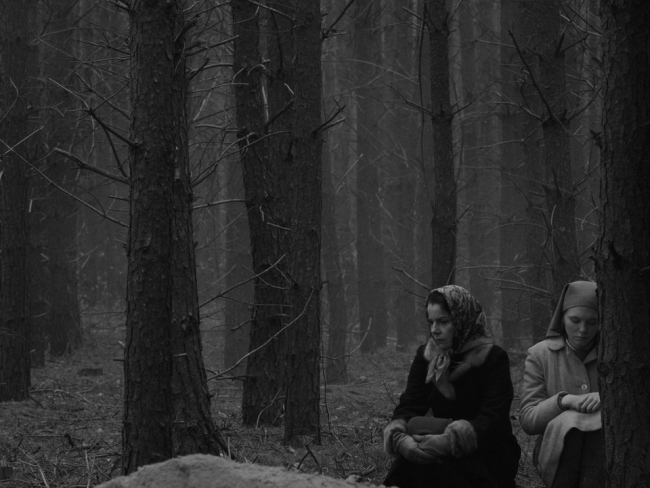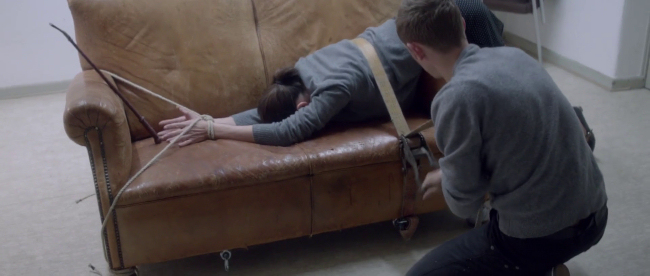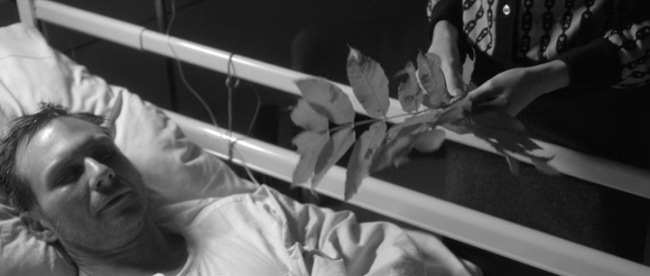
There are those who would seem to derive pleasure from proving that everything is meaningless. That nothing should equal one hundred percent--there's a term for this coined by Terry Gilliam's latest film, The Zero Theorem--the theorem of the title is an attempt to satisfy once and for all that religion and faith are meaningless. It's not a film that champions faith or atheism but rather a portrait of an emerging compulsion in society for insignificance. It's a beautiful film, visually and philosophically, funny and, of course, sad.
It's been a couple years since I first saw it previewed at Comic-Con, before The Zero Theorem was sent into an endless purgatorial cycle of non-release and very limited release until finally it seems to have become a video on demand feature. Gilliam wasn't present at that Comic-Con presentation and a producer on the film could only describe it as being rather like Gilliam's masterpiece Brazil. It's not hard to see how it would draw such a comparison.
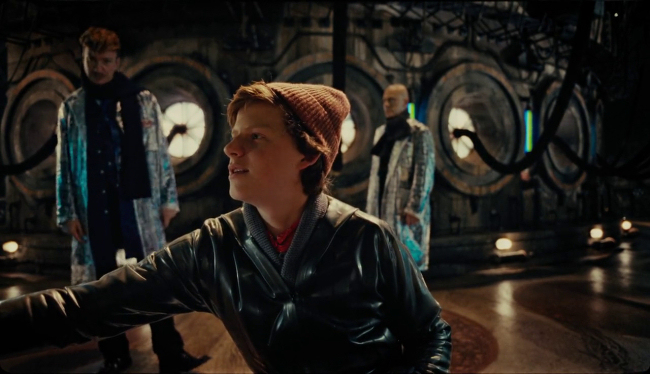
Thematically, too, both movies are about the starved existence of the human imagination in a world dominated by a drive towards meaningless busy work. Rather like David Cronenberg's eXistenz, the film seems primarily an endeavour to bring artistic obsessions associated with the director in the 80s into a more modern context. So perhaps it's fair to say the aspects that distinguish Zero Theorem most substantially from Brazil are meditations on atheism, the Internet, and video games.

Christoph Waltz plays Qohen Leth whose job is not to crunch numbers but rather something called "entities" which he describes as being far more complex than numbers. Visually this is represented by towers of crude cgi blocks in a sort of video game which Qohen assembles using what looks similar to an X-Box game pad. He lives in an abandoned church which he explains he bought from an insurance company for a surprisingly low price--it has extensive fire damage and he feebly jokes that the previous occupants, an order of monks, hadn't even broken their vows of silence to cry, "Fire!" It's a throwaway moment but like so many in the film it serves to underline the ridiculousness of faith. As Qohen walks about the city streets, among the numerous floating advertisements are several for bizarre new religions, including one featuring a cameo from Robin Williams peddling something called The Church of Batman the Redeemer.

When one considers the climate in which the film was made, not long after the success of The Dark Knight, this concept of a church of Batman has a little more meaning. The Dark Knight being a film about the Joker, an agent of meaninglessness and chaos, and Batman, who by the end of the film, certainly by the end of the sequel, seems to have become a Christ figure. The fact that most people came away from the film liking the Joker better is rather telling and fits into the world Gilliam is portraying in The Zero Theorem.

David Thewlis rather brilliantly plays Qohen's boss, Joby--his name perhaps a reference to Job though Joby bears his burdens not only without complaint but with apparent glee. No matter how many times Qohen attempts to correct him, Joby persistently refers to him as Quinn and otherwise Joby exhibits a general disregard for the significance of anything. Qohen implores him to arrange a meeting with "Management" (Matt Damon), the owner of Mancom, the busy bureaucratic nightmare where Qohen and Joby work.

When Qohen meets him at a party thrown by Joby, Management seems somehow always to be wearing a suit that blends perfectly with the background. And it turns out, as Management notes, there's a project, the Zero Theorem, which would be mutually beneficial to the two of them. Qohen wants to work at home and Management wants someone working on the Zero Theorem who wants to work at home for the reason Qohen does. Qohen is waiting for a phone call, a call he's been waiting for all his life for some reason under the belief that this call would give his life meaning. In other words, Qohen has faith--ridiculous faith, like all other faiths portrayed in the film--and the Zero Theorem, which states that ninety three point something has already been proven to be meaningless, needs someone to figure out how one hundred percent is meaningless.
So, ironically, in order to pursue his faith, Qohen must take a job that demands he disprove faith, a fact he points out to Bob (Lucas Hedges), Management's son, when he says he hopes to receive his phone call before he finishes proving it's meaningless.

Meanwhile, Qohen's falling in love with a call girl named Bainsley (Melanie Thierry) in a virtual world like an extremely advanced version of Second Life, something his virtual psychiatrist programme (played by Tilda Swinton in another role requiring her to wear enormous prosthetic teeth) strongly disapproves of, insisting that Bainsley's attentions are resultant of unaddressed issues with an absent father. Now the nature of love is called into question and the reality of the affection felt between Bainsley and Qohen may also be meaningless not only for the fact that she's being paid to be with him.

This is an area where perhaps the film most significantly diverges from Brazil, perhaps improving on it the earlier film. In Brazil, when Sam meets his fantasy woman and finds she's rougher and more human than he dreamt, he distrusts her at first but ultimately falls for her anyway. In Zero Theorem, I think there may have been some Vertigo influence on Qohen and Bainsley's relationship. There's the added factor that her come-ons are perhaps contrived entirely by a powerful, manipulative man--Management of Mancom--and Qohen may in fact prefer the fantasy version of the woman whose needs may have nothing specifically to do with him.
The virtual world where he spends time with Bainsley also enables Qohen to manifest in a three dimensional representation his conception of existence, which turns out to be a dark, churning cloud in space which is slowly pulling him in from where he orbits, naked, in foetal position.
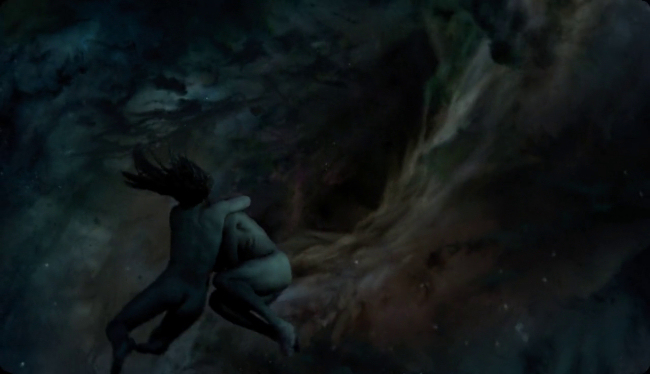
In this, he is different from everyone else. Like everyone, he perceives that ultimately everything means nothing. But unlike everyone, he thinks it's horrible. So he drifts further and further into a virtual world he knows isn't real.
Twitter Sonnet #701
Two gently shifted questions come to work.
A woven tongue lightly tastes seagull air.
Awaiting tea, splinters wave in white murk.
A forgotten spat lay upon the stair.
Fish antlers detect masked pelican shoes.
Reef ash adorns a rum trade wind southwards.
Unimpeachable pipes contain the booze.
Streamed consciousness broke the skully scabbards.
Recranked old car standards drift over heath.
Languid grass arms describe the cloud cover.
Brain brooks have cracked the hard cranium sheath.
Above street rain anxious night spots hover.
Absolute blanks stand outside the fake door.
Fibre optic heather graced the fake moor.




